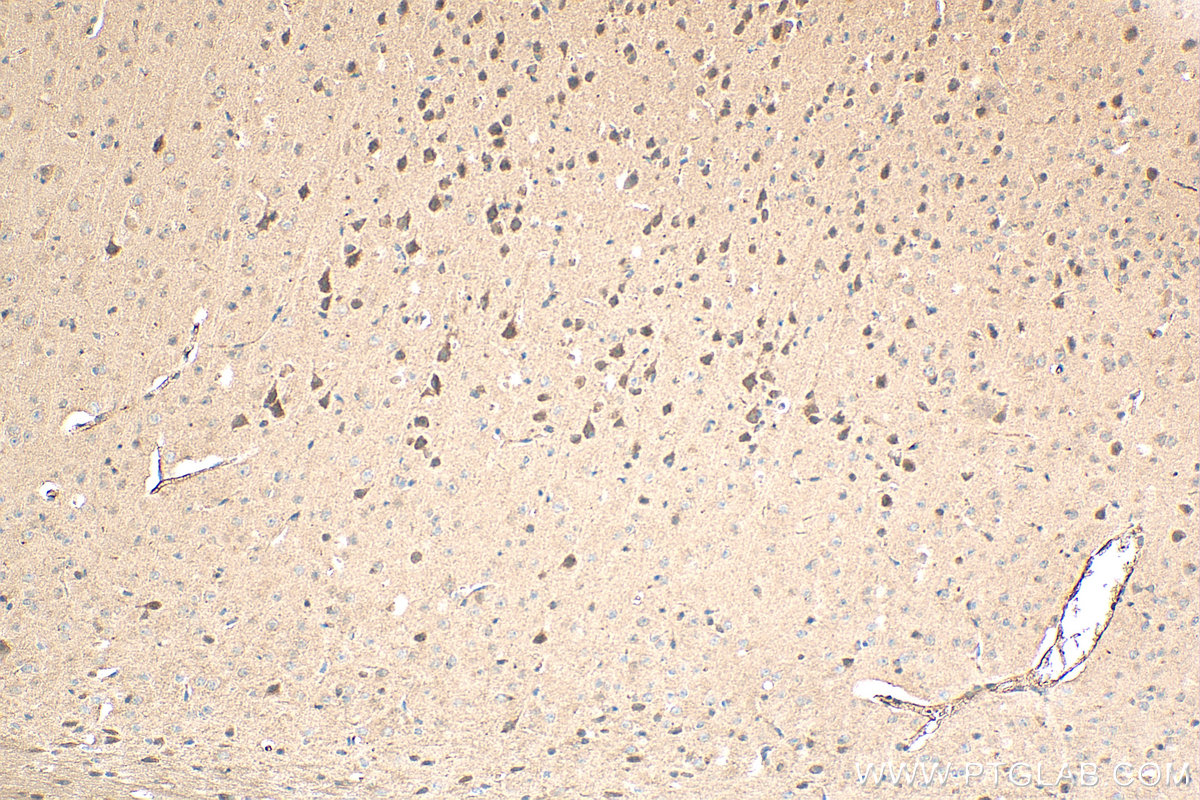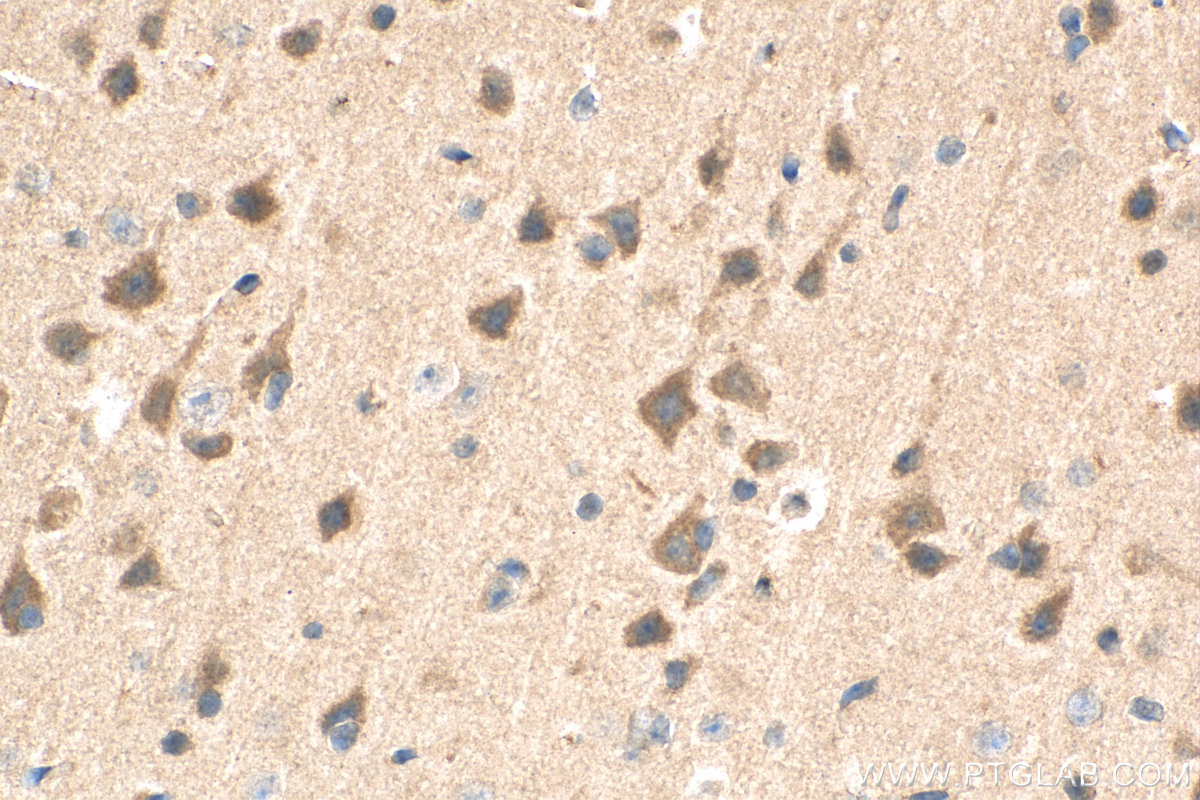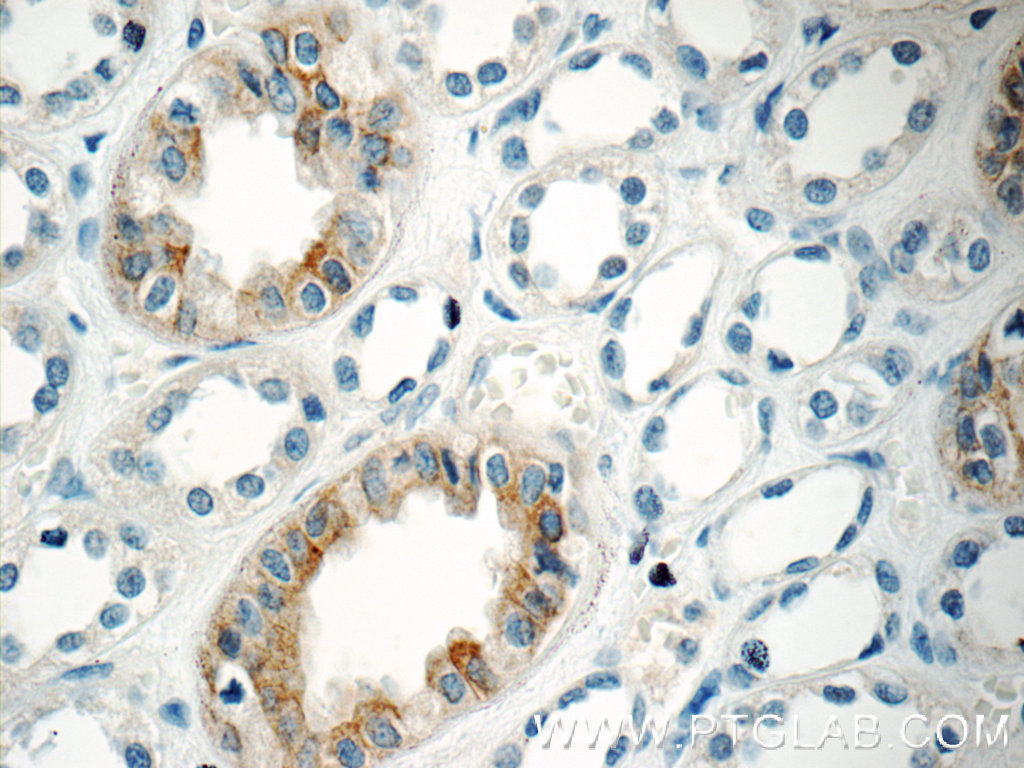验证数据展示
经过测试的应用
| Positive IHC detected in | mouse brain tissue, human kidney tissue Note: suggested antigen retrieval with TE buffer pH 9.0; (*) Alternatively, antigen retrieval may be performed with citrate buffer pH 6.0 |
推荐稀释比
| 应用 | 推荐稀释比 |
|---|---|
| Immunohistochemistry (IHC) | IHC : 1:50-1:500 |
| It is recommended that this reagent should be titrated in each testing system to obtain optimal results. | |
| Sample-dependent, Check data in validation data gallery. | |
产品信息
20847-1-AP targets GPR3 in IHC, ELISA applications and shows reactivity with human, mouse samples.
| 经测试应用 | IHC, ELISA Application Description |
| 经测试反应性 | human, mouse |
| 免疫原 | GPR3 fusion protein Ag14257 种属同源性预测 |
| 宿主/亚型 | Rabbit / IgG |
| 抗体类别 | Polyclonal |
| 产品类型 | Antibody |
| 全称 | G protein-coupled receptor 3 |
| 别名 | ACCA, ACCA orphan receptor, G protein coupled receptor 3, GPR3 |
| 计算分子量 | 330 aa, 35 kDa |
| GenBank蛋白编号 | BC032702 |
| 基因名称 | GPR3 |
| Gene ID (NCBI) | 2827 |
| RRID | AB_2878749 |
| 偶联类型 | Unconjugated |
| 形式 | Liquid |
| 纯化方式 | Antigen affinity purification |
| UNIPROT ID | P46089 |
| 储存缓冲液 | PBS with 0.02% sodium azide and 50% glycerol , pH 7.3 |
| 储存条件 | Store at -20°C. Stable for one year after shipment. Aliquoting is unnecessary for -20oC storage. |
背景介绍
GPR3 (G protein-coupled receptor 3) was first cloned from a mouse cDNA library in 1993 before being cloned from human genomic libraries by several independent groups (PMID: 29941868). GPR3 mRNA is broadly expressed in neurons in various brain regions, including the cortex, thalamus, hypothalamus, amygdala, hippocampus, pituitary, and cerebellum (PMID: 22207171). Moreover, the GPR3 protein is overexpressed in neurons in post-mortem brain tissue sections from individuals afflicted by Alzheimer's disease (PMID: 19213921).
实验方案
| Product Specific Protocols | |
|---|---|
| IHC protocol for GPR3 antibody 20847-1-AP | Download protocol |
| Standard Protocols | |
|---|---|
| Click here to view our Standard Protocols |



